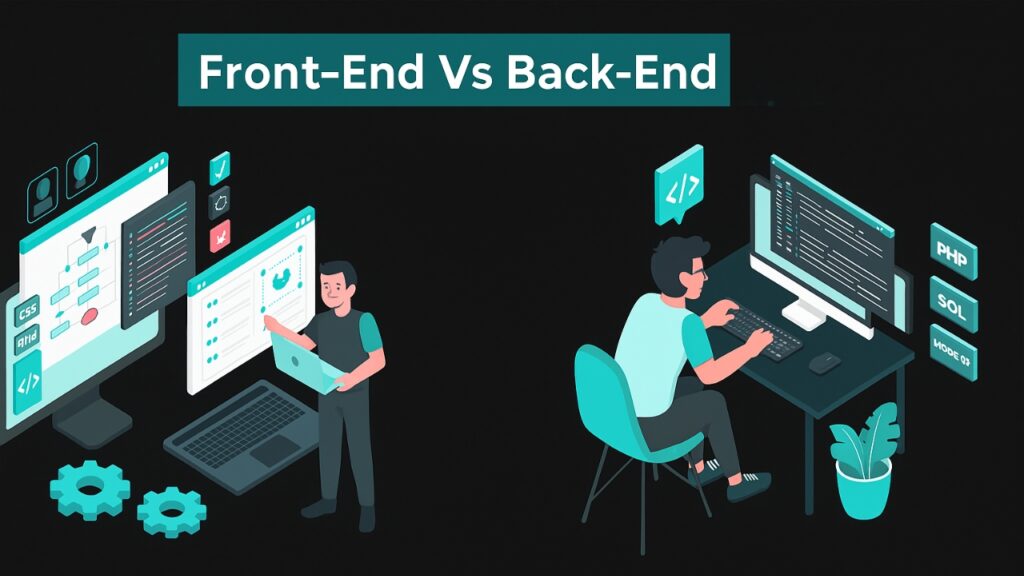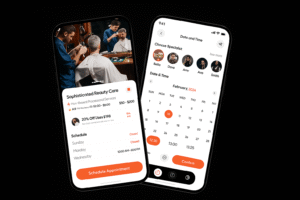Confused about front-end vs back-end web development? This complete guide for 2025 breaks down the differences, roles, skills, and tools used in both areas.
Introduction to Front-End vs Back-End Web Development
When diving into the world of websites and apps, it’s essential to understand front-end vs back-end web development. These two core areas of web development work together to create fully functional and interactive websites.
In this detailed guide, you’ll learn what front-end and back-end development are, how they differ, which skills are required, and which career path might suit you best.
What Is Front-End Web Development?
Front-end web development is all about what users see and interact with in their web browser. It involves designing and coding the layout, visuals, and interactive elements of a website.
Key Technologies:
HTML (HyperText Markup Language) – Structures content on the web.
CSS (Cascading Style Sheets) – Styles content and layouts.
JavaScript – Adds interactivity (e.g., dropdowns, sliders, animations).
Frameworks: React.js, Vue.js, Angular
Responsibilities:
Creating responsive web layouts
Optimizing user interface (UI) design
Ensuring cross-browser compatibility
Enhancing performance and accessibility
In the debate of front-end vs back-end web development, front-end focuses entirely on the user experience.
What Is Back-End Web Development?
Back-end web development is everything that happens behind the scenes. It powers the database interactions, server logic, and application infrastructure that make a website function.
Key Technologies:
Programming Languages: Python, PHP, Ruby, Java, Node.js
Databases: MySQL, MongoDB, PostgreSQL
Frameworks: Django, Laravel, Express.js
Server Tools: Apache, Nginx
Responsibilities:
Managing databases and user authentication
Creating APIs and server-side logic
Ensuring data security
Handling server configuration and hosting
Back-end development is the engine of any application. In the context of front-end vs back-end web development, it handles logic and functionality.
Front-End vs Back-End Web Development: Side-by-Side Comparison
| Feature | Front-End Development | Back-End Development |
|---|---|---|
| Focus | User Interface (UI) | Server, Database, Application Logic |
| Languages | HTML, CSS, JavaScript | Python, PHP, Node.js, Java |
| Tools & Frameworks | React, Angular, Vue.js | Django, Express, Laravel |
| Works With | Design, UX, UI | Data, APIs, Servers |
| Goal | Visual presentation & interaction | Powering logic, data flow & storage |
Full-Stack Development: Best of Both Worlds
A full-stack developer is someone skilled in both front-end and back-end technologies. They can build complete web applications from the ground up.
With the demand for versatile developers rising in 2025, full-stack development is becoming more popular in the tech industry.
Which One Should You Learn First?
If you’re just starting in web development:
Choose front-end development if you’re creative and enjoy visual design.
Choose back-end development if you enjoy working with logic, data, and problem-solving.
Ultimately, understanding both sides of front-end vs back-end web development will give you an edge in the job market.
FAQs – Front-End vs Back-End Web Development
Q1: Do front-end developers need to know coding?
Yes. While design tools help, front-end developers must know HTML, CSS, and JavaScript.
Q2: Is back-end development harder than front-end?
It depends on your interests. Back-end requires understanding server logic and databases, while front-end demands design skills.
Q3: Can one person do both front-end and back-end development?
Yes! Full-stack developers handle both and are in high demand in 2025.
Q4: Which has better job opportunities: front-end or back-end?
Both have strong demand. However, full-stack roles are increasingly common and often better paid.
Conclusion
Understanding the difference between front-end vs back-end web development is key for anyone interested in building websites or apps. Whether you’re drawn to visual design or logic and data, both paths offer exciting career opportunities.
Stay tuned to this blog for more expert guides on mastering web development in 2025.














